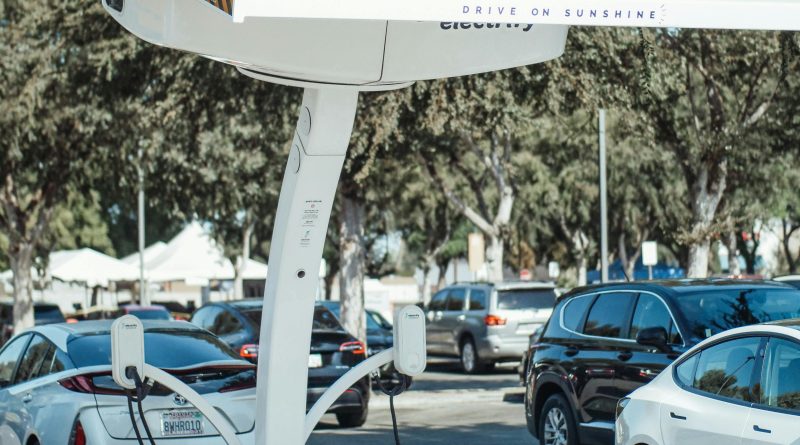The Future of Electric Vehicles: New Tech That Could Change the Market
The Future of Electric Vehicles: New Tech That Could Change the Market
There was a time when electric vehicles (EVs) were considered futuristic, niche, or even impractical. Fast forward to today, and they’re at the forefront of a transportation revolution. With concerns over climate change, rising fuel prices, and a global push for sustainability, EVs are becoming the go-to solution for cleaner, greener mobility.
But here’s the exciting part: we’re just getting started.
In this post, we’ll explore the latest breakthroughs in EV technology, what they mean for consumers and the planet, and how these innovations could reshape the automotive market forever. Whether you’re an EV enthusiast, a curious consumer, or a green tech advocate, you’re about to get a glimpse into the thrilling road ahead.
🚗 Why Electric Vehicles Matter for the Planet
Let’s begin with the “why.” Why should we even care about electric vehicles?
Traditional gas-powered vehicles are one of the biggest contributors to greenhouse gas emissions.
Every gallon of gasoline burned releases around 8.89 kg of CO₂ into the atmosphere.
Switching to electric vehicles, especially when powered by renewable energy, can drastically cut carbon emissions and reduce our dependency on fossil fuels.
And it’s not just about emissions. EVs are:
Quieter (less noise pollution)
Cheaper to run and maintain
Powered by electricity, which can come from clean sources like solar or wind
If we’re serious about building a greener future—one where clean air and sustainable energy are the norm—electric vehicles play a starring role.
🔋 The Big Battery Breakthroughs
If there’s one component that defines the success of electric vehicles, it’s the battery. Over the past decade, we’ve seen major improvements—but the next wave of technology is set to be a game-changer.
1. Solid-State Batteries
Most EVs today use lithium-ion batteries. They’re reliable, but they come with limitations: they’re heavy, have long charging times, and can degrade over time.
Enter solid-state batteries.
What makes them special? They replace the liquid electrolyte with a solid one.
Why it matters: Solid-state batteries can offer more energy density, faster charging, and greater safety (they’re less likely to catch fire).
Toyota, BMW, and QuantumScape are investing heavily in this technology. Some experts predict that solid-state batteries could double EV range while cutting charge times in half.
2. Sodium-Ion Batteries
Lithium is a rare and expensive resource. But sodium? It’s abundant and cheap.
Sodium-ion batteries are gaining attention as a low-cost alternative.
Companies like CATL (China’s largest battery maker) are already testing these batteries in real-world applications.
While they don’t yet match lithium in performance, ongoing innovations could soon make sodium-based batteries a viable solution for low-cost EVs.
⚡ Ultrafast Charging: Plug In, Power Up, and Go
Let’s be honest: waiting 30 minutes (or longer) for your car to charge isn’t ideal. One of the biggest challenges in EV adoption has been charging time and convenience.
Thankfully, that’s changing.
1. 800-Volt Charging Systems
New EVs from Porsche (Taycan), Hyundai (Ioniq 5), and Kia (EV6) are using 800-volt architectures instead of the traditional 400V systems.
This allows charging from 10% to 80% in under 18 minutes.
Higher voltage also means more efficient power delivery and less heat build-up.
2. Wireless Charging
Imagine parking your car and it starts charging—no cables, no plugs.
Wireless (inductive) charging uses electromagnetic fields to transfer energy between a charging pad on the ground and a receiver on the car. Companies like WiTricity and Momentum Dynamics are piloting wireless charging for public transportation and personal vehicles.
Though still in early stages, this tech could make charging as simple as parking.
🌍 EVs Powered by Renewable Energy
EVs are only as green as the power that charges them. That’s why there’s a growing focus on integrating renewable energy into EV charging infrastructure.
1. Solar Charging Stations
Solar-powered EV stations are popping up in smart cities and off-grid communities. They:
Reduce reliance on fossil fuels
Provide energy independence
Operate even during grid outages
Some companies are even exploring solar EVs, like the Aptera and Lightyear One, which embed solar panels directly into the car’s body.
2. Vehicle-to-Grid (V2G) Technology
This is a big one. V2G enables EVs to return power to the grid during peak hours, essentially turning your vehicle into a mobile battery.
Helps stabilize the energy grid
Saves money through energy buyback programs
Promotes a two-way relationship between vehicles and clean energy
It’s sustainability and smart tech working hand-in-hand.
🤖 Artificial Intelligence & Smart Driving
EVs aren’t just about clean energy—they’re also at the forefront of intelligent driving systems.
1. Autonomous Driving
While full self-driving is still evolving, EVs from companies like Tesla, Waymo, and Apple are leading the charge in autonomous tech.
EVs are uniquely suited for autonomous features due to:
Their simpler mechanics
Integrated sensor and software systems
Real-time data processing capabilities
Imagine being able to sit back, relax, and let your EV navigate the commute for you.
2. Smart Routing and Energy Management
AI is also being used to:
Optimize routes based on traffic and battery level
Find the most efficient charging stations
Predict battery wear and driving patterns
The result? A smoother, smarter, and more personalized driving experience.
🛠️ Sustainable Manufacturing and Materials
It’s not enough for the vehicle to be electric—how it’s made matters, too.
1. Eco-Friendly Materials
Manufacturers are moving away from plastic-heavy interiors to sustainable alternatives like:
Recycled fabrics and plastics
Vegan leather (made from pineapple leaves or mushrooms!)
Natural fibers like hemp, flax, and jute
2. Circular Manufacturing
Companies like Rivian, Lucid, and Volvo are adopting circular design philosophies:
Reusing vehicle parts
Designing for end-of-life disassembly
Reducing emissions in the production line
This approach ensures that the sustainability of EVs goes beyond just the driving phase.
🏙️ The Rise of EV Infrastructure
For EVs to become mainstream, we need more than just vehicles—we need an entire ecosystem.
1. More Charging Stations
Governments and private companies are ramping up investments in charging infrastructure. Fast chargers are being installed along highways, in urban centers, and even at gas stations.
2. Smart Grids
With millions of EVs plugged in, we’ll need smarter grids to manage demand. AI and machine learning are helping utilities:
Predict peak usage times
Prevent overloads
Integrate renewable energy more effectively
3. Battery Swapping Stations
In countries like China and India, battery-swapping is catching on. Instead of waiting to charge, drivers pull into a station, and their battery is swapped out in minutes.
It’s faster than charging and ideal for commercial fleets, taxis, and delivery vehicles.
👨👩👧👦 How Consumers Are Driving the Change
EVs are no longer just for tech geeks or environmentalists. With more models, better pricing, and government incentives, regular families are making the switch.
What’s attracting consumers?
Lower running costs (electricity is cheaper than fuel)
Fewer maintenance issues (no oil changes, fewer moving parts)
Tax credits and rebates
A desire to reduce carbon footprints
And let’s face it—EVs are cool. Sleek designs, silent engines, instant torque—it’s a whole new driving experience.




